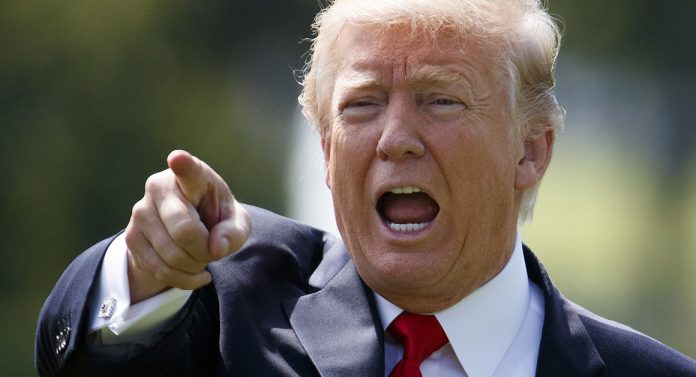Thought the trade talks were going well? So did scores of other investors, ready for the two sides to finally end hostilities after months of productive meetings.
After all, significant progress had been made – China vowed to stop intellectual property theft, and the Trump administration was preparing to reduce tariffs even further.
But that all changed on Sunday evening, when the President published the following message via two consecutive tweets:
“For 10 months, China has been paying Tariffs to the USA of 25% on 50 Billion Dollars of High Tech, and 10% on 200 Billion Dollars of other goods. These payments are partially responsible for our great economic results. The 10% will go up to 25% on Friday.
325 Billions Dollars of additional goods sent to us by China remain untaxed, but will be shortly, at a rate of 25%. The Tariffs paid to the USA have had little impact on product cost, mostly borne by China. The Trade Deal with China continues, but too slowly, as they attempt to renegotiate. No!”
By announcing a scheduled tariff hike to 25% on $325 billion of Chinese goods, Trump single-handedly dealt a hammer-blow into the side of the otherwise stable global markets.
Better-than-expected GDP growth out of the United States, coupled with a reinvigorated European Union had investors brimming with newfound confidence.
The global slowdown had been staved off, and better yet, the Fed looked likely to drop interest rates even further to bring inflation back to a “healthy level”.
It was a “perfect storm” of good news, that could’ve led to a potentially massive equity rally – complete with the setting of new all-time-highs across the major indexes.
Now, though, investors are reeling – terrified that another tariff hike would take us right back to square one, effectively rebooting the trade war.
But surprisingly, even in the face of a tariff threat, many analysts have a different outlook. Instead of buying-in to the “gloom and doom”, Wall Street firms are trying to calm everyone’s nerves.
Take UBS’s team of strategists for example, who see the tweets as nothing more than a bargaining chip:
“The timing of the threat suggests it is a tactic designed to increase leverage going into final trade negotiations.”
Citigroup had a similar opinion, arguing that “unless China walks away from the talks (which is not necessarily the same as Vice Premier Liu canceling his trip but rather having no talks at all), we do not expect an escalation of trade tensions into a trade war.”
Raymond James analyst Ed Mills, on the other hand, wasn’t ready to dismiss this as another Trump smokescreen.
“Based upon our conversations with our trade contacts, there appears to be a universal belief that this is not negotiating leverage, but what was almost a done deal last week, has derailed in recent days,” he wrote in a note to clients.
Goldman Sachs analysts believe that “the odds of tariffs increasing on Friday are 40%,” – a convenient prediction that will leave them looking wise to laymen regardless of the outcome.
If Trump really does raise tariffs on Chinese goods, then this will likely be the catalyst that kicks off the next correction. Investors have been waiting for it for months now, growing increasingly nervous as the American indexes scrape their all-time-highs.
It’s been a historic run since Christmas of 2018, and if this is how it ends, then so be it. Bulls have already pocketed a tidy sum, and over the next few weeks, plenty of opportunistic traders could catch bountiful gains during a market deflation.
That’s not to say that equities will finish out the year at a loss, though. As it stands, the economy simply looks too strong for that to happen, and corporate earnings have been far better than expected as a whole.
A tariff increase on Friday would be a road bump, albeit a significant one, but not fatal to the continued bull market.
And if Trump decides to wave-off the tariffs? Look out, because the market could “pop-off” in an absolute eruption of goodwill from investors, blowing past the highs of 2018 by a wide margin.







